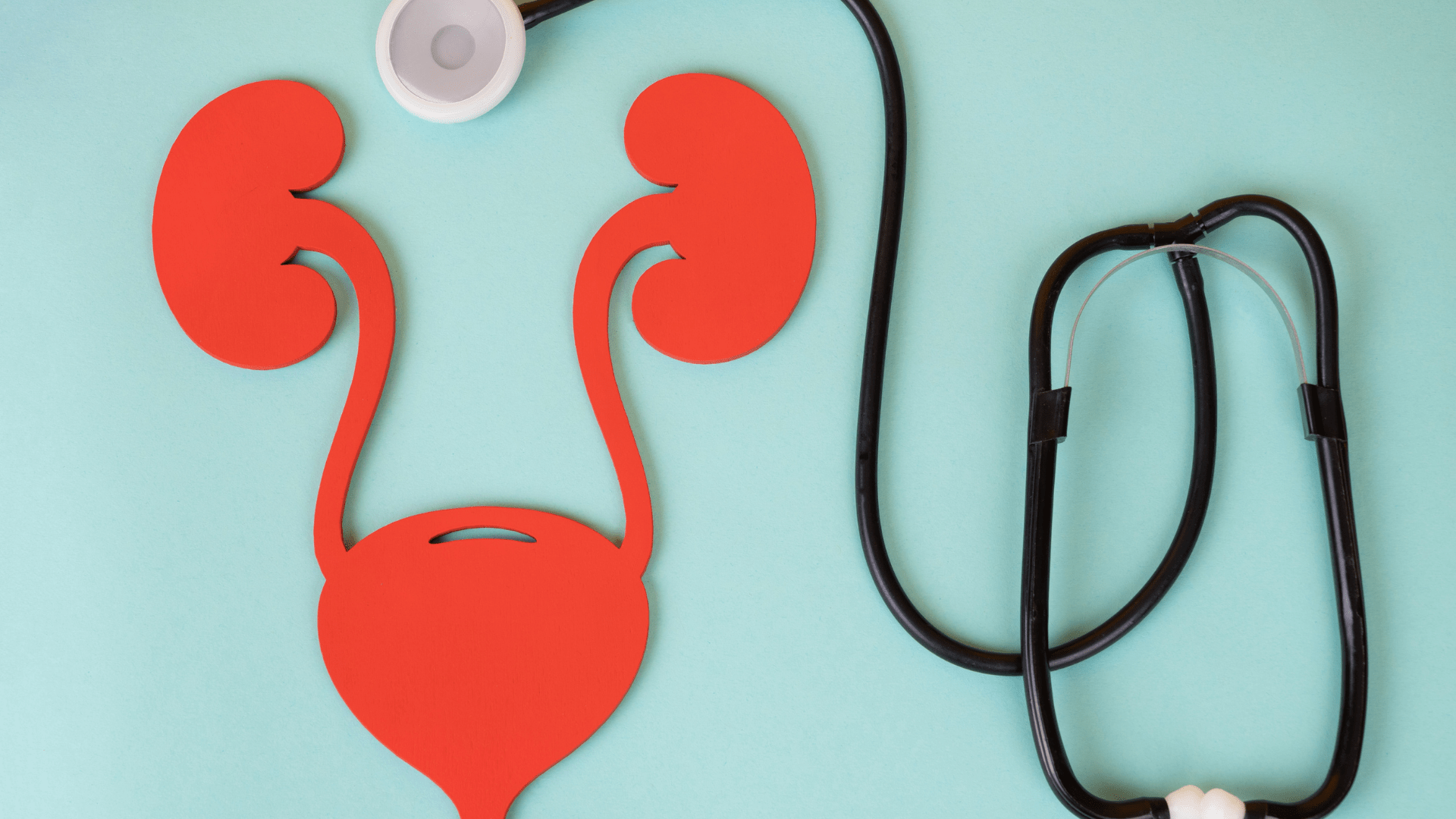Endometriosis is a medical condition in which tissue similar to the lining of the uterus grows outside of the uterus. This tissue, known as endometrial tissue, typically lines the inside of the uterus and is shed during menstruation. However, when it grows outside the uterus, it continues to act as it would inside the uterus, breaking apart and bleeding during the menstrual cycle. The problem arises because this blood has no way to exit the body, leading to inflammation, scarring, and the formation of lesions.
Endometriosis primarily affects the ovaries, but it can also occur in other areas of the pelvis and abdomen. There are four main types of endometriosis based on the areas it affects:
- Superficial Peritoneal Endometriosis: The endometrial tissue attaches to the peritoneum, a thin membrane that lines the abdomen and pelvis. This is the least severe form.
- Endometriomas: These are fluid-filled cysts, often referred to as “chocolate cysts,” that develop in the ovaries. They can vary in size.
- Deeply Infiltrating Endometriosis (DIE): In this type, the endometrial tissue invades organs within or outside the pelvic cavity, such as the ovaries, rectum, bladder, and bowels. Severe cases can lead to the formation of scar tissue and a condition called a frozen pelvis.
- Abdominal wall endometriosis: Endometrial tissue can grow on the abdominal wall, sometimes attaching to a surgical incision, such as from a C-section.
Symptoms
The symptoms of endometriosis can vary from person to person. Some common symptoms include:
- Severe menstrual cramps (dysmenorrhea)
- Back pain during menstruation
- Pain during bowel movements or urination, especially during menstruation
- Unusual heavy bleeding (Menorrhagia)
- Blood in the stool or urine (Hematuria)
- Diarrhoea or constipation
- Painful sexual intercourse
- Fatigue
- Difficulty getting pregnant (difficulty with implantation)

Causes
The exact cause of endometriosis is not fully understood. Some theories suggest that retrograde menstruation, where menstrual blood with endometrial cells flows back through the fallopian tubes into the pelvic cavity, plays a role in the development of endometriosis. Genetic factors may also contribute, as there is an increased risk of developing endometriosis if a close family member has the condition. Hormonal and immune system abnormalities, as well as other factors like surgical scar implantation and transport of endometrial cells through blood vessels or the lymphatic system, may also be involved.
Other presumptive or possible causes include:
- Transformation of peritoneal cells: Hormones or immune factors may cause peritoneal cells (cells lining the abdomen) to transform into endometrial-like cells.
- Embryonic cell transformation: Hormones, such as estrogen, may transform embryonic cells into endometrial-like cell implants during puberty.
- Surgical scar implantation: Endometrial cells can attach to surgical incisions after procedures like hysterectomy or C-section.
- Endometrial cell transport: Endometrial cells can be transported to other parts of the body through blood vessels or the lymphatic system.
Complications
- Severe pain: Endometriosis pain can significantly impact a person’s quality of life and may lead to anxiety or depression.
- Increased cancer risk: Endometriosis may raise the risk of ovarian cancer and a specific type of cancer called endometriosis-associated adenocarcinoma.
- Leading cause of infertility: Endometriosis is a major cause of infertility, affecting many individuals in their 30s and 40s.
- Impacts on reproductive organs: Endometrial tissue can interfere with the release of eggs, block sperm and fertilized eggs from reaching the uterus, affect hormonal balance, and impact the implantation of the embryo.
Diagnosis
- Pelvic exam: A physical examination may reveal cysts or scars behind the uterus.
- Imaging tests: Ultrasound, CT scan, or MRI can provide detailed images of the organs.
- Laparoscopy: A surgical procedure involving the insertion of a camera (laparoscope) through a small incision to visualize and assess the size and location of lesions. It is the most definitive way to diagnose endometriosis.
- Biopsy: During laparoscopy, a tissue sample may be taken for examination under a microscope to confirm the presence of endometriosis.
Stages of endometriosis
The American Society of Reproductive Medicine (ASRM) has developed a classification system for endometriosis known as the Revised American Society for Reproductive Medicine (rASRM) staging system. This system categorizes endometriosis based on the extent and severity of the disease. The stages range from Stage I (minimal) to Stage IV (severe). Here are the stages of endometriosis according to the ASRM:
- Stage I: Minimal Endometriosis
In Stage I, there are small, isolated implants or lesions of endometriosis on the peritoneum (the tissue lining the pelvic cavity) and ovaries. There may be minimal adhesions (abnormal connections) or scarring in the pelvic region. - Stage II: Mild Endometriosis
Stage II involves more extensive implants or lesions of endometriosis compared to Stage I. The implants are still primarily on the peritoneum and ovaries, but there may be deeper lesions or small cysts present. Mild adhesions may also be present, causing organs or tissues to stick together in the pelvis. - Stage III: Moderate Endometriosis
Stage III is characterized by the presence of multiple implants or lesions of endometriosis. In addition to the peritoneum and ovaries, endometriosis may be found in the fallopian tubes, uterus, ligaments, or other pelvic structures. This Stage often involves the formation of deep endometriotic nodules or cysts called endometriomas. Moderate to severe adhesions and scarring can be present, causing organs to become further distorted or adhere together. - Stage IV: Severe Endometriosis
Stage IV is the most advanced and severe Stage of endometriosis. It involves extensive implants or lesions throughout the pelvis and may extend beyond the pelvic cavity. In addition to the locations affected in Stage III, endometriosis may involve the bowel, bladder, ureters, and other distant organs. Severe adhesions, scarring, and large endometriotic cysts are common in Stage IV, leading to significant distortion and dysfunction of pelvic structures.
Treatment Options for Endometriosis
Endometriosis is a condition for which there is currently no cure. However, there are various treatment approaches available, including surgical interventions and medication. It’s important to explore different options to find the treatment that works best for you and provides relief from your symptoms.
- Pain Relief Medication: Your doctor may initially recommend over-the-counter pain relievers, such as nonsteroidal anti-inflammatory drugs (NSAIDs) like ibuprofen or naproxen. If these medications do not effectively alleviate your pain, your doctor can suggest alternative options.
- Hormonal Therapy: Hormonal therapy aims to reduce the production of estrogen in your body and prevent menstruation. This can help decrease inflammation, scarring, and the formation of cysts associated with endometriosis. Common hormonal treatments include:
– Birth control pills, patches and vaginal rings
– Gonadotropin-releasing hormone (Gn-RH) agonists and antagonists like elagolix sodium (Orilissa) or leuprolide (Lupron)
– Progestin-only contraceptives
– Danazol (Danocrine) - Surgery: Surgery may be recommended by your doctor to remove as much affected tissue as possible. In some cases, surgery can provide symptom relief and potentially improve your chances of getting pregnant. The procedure may involve using a laparoscope or performing a standard surgery with larger incisions. However, it’s important to note that pain can sometimes return after surgery.In severe cases, a hysterectomy may be necessary to remove the ovaries, uterus, and cervix. However, this procedure eliminates the possibility of future pregnancy.
Lifestyle Changes for Managing Endometriosis
In addition to medical treatments, certain lifestyle changes can help alleviate symptoms and manage endometriosis:
- Dietary Modifications: Research suggests a connection between endometriosis and specific dietary patterns. Diets low in fruits and vegetables but high in red meat may contribute to increased estrogen production, potentially leading to the growth of excess endometrial tissue. To address this, consider the following:- Increase your intake of fresh fruits and vegetables, making them the focal point of your meals. Pre-washed and cut produce can make it easier to incorporate more of these nutritious foods into your diet.
– Include foods rich in omega-3 fatty acids, such as salmon and walnuts, as they have been found to be beneficial. Conversely, limit your consumption of trans fats, which are associated with a higher risk of endometriosis.
– Avoid or minimize alcohol and caffeine intake, as they have been linked to an increased risk of developing endometriosis. - Regular Exercise: Engaging in regular exercise offers several benefits for managing endometriosis. Exercise promotes improved circulation, enhances nutrient and oxygen delivery to your organs, and potentially reduces estrogen levels. Studies have shown that individuals who exercise frequently, particularly through high-intensity activities like running or biking, have a lower likelihood of developing endometriosis. Exercise also helps alleviate stress and releases endorphins, which can provide pain relief. Even low-intensity workouts like yoga.
- Stress Management: Stress can exacerbate endometriosis symptoms, and the condition itself can cause stress due to severe pain and other side effects. Finding effective stress management techniques is crucial for symptom relief. Consider incorporating the following practices into your routine:
- Engage in activities like yoga, meditation, or other forms of relaxation to manage stress.
- Prioritize self-care and make time for activities that promote relaxation and well-being.
- Seeking support from a therapist can also be helpful.
References
FAQs
- Can endometriosis cause infertility?
Answer: Yes, endometriosis can contribute to infertility. The presence of endometrial tissue outside the uterus can affect the normal function of the reproductive organs, including the ovaries, fallopian tubes, and uterus, making it more difficult for women with endometriosis to conceive naturally. However, various fertility treatments are available to help overcome infertility associated with endometriosis. - Can lifestyle changes help manage endometriosis symptoms?
Answer: While lifestyle changes cannot cure endometriosis, they can help manage symptoms and improve quality of life. Strategies such as regular exercise, a healthy diet, stress reduction techniques, and adequate sleep may provide symptom relief for some individuals. - Can endometriosis come back after treatment?
Answer: Endometriosis can recur after treatment, especially if the underlying hormonal and immune imbalances are not addressed. Regular monitoring and follow-up with a healthcare professional are important to manage symptoms and adjust treatment plans if necessary. - Can endometriosis be cured?
Answer: Currently, there is no known cure for endometriosis. However, various treatment options can effectively manage symptoms and improve quality of life. In some cases, symptoms may improve or resolve after menopause. - Are there support groups or resources available for individuals with endometriosis?
Answer: Yes, there are support groups, online communities, and organizations dedicated to providing information, support, and resources for individuals with endometriosis. These platforms offer a chance to connect with others who share similar experiences and provide valuable guidance.





